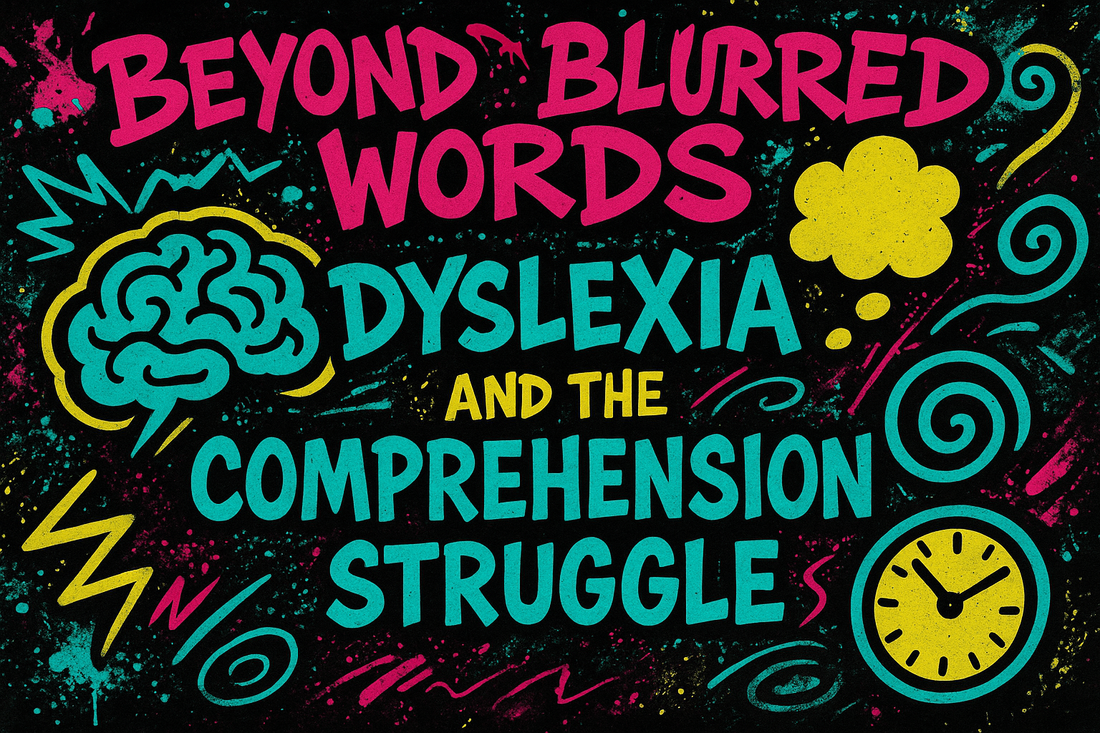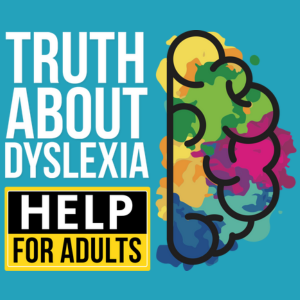
Beyond Blurt Words_ Dyslexia And The Comprehension Struggle
Share
Have you ever felt like there’s a secret code to reading and understanding that you weren’t taught? You’re not alone. This episode dives into the lesser-known realities of dyslexia, showing it’s about far more than mixing letters or stumbling over words.
We explore what happens when reading is fine but comprehension lags behind, how memory hiccups can lead to workplace blunders, and why it’s so easy to feel misunderstood. If you’ve ever wondered why you or someone you know can read something but not fully grasp it, you’ll want to stick around. The podcast’s player is at the top of this page, so listen in if you’re ready to learn how dyslexia shapes our entire way of thinking.
Understanding Dyslexia Beyond Letters
Most people think dyslexia means mixing up letters, like seeing b as d or vice versa. That’s part of the picture, but the full story is much richer. Dyslexia can make you feel like you’re running an entirely different operating system in your mind, which affects how you process and store information.
Dyslexic brains often absorb data in a more visual or conceptual way. Traditional education typically relies on words and numbers, posted on a board or spelled out in textbooks. For someone with dyslexia, that can feel like being handed a puzzle without all the pieces. You might read a sentence just fine, but recalling it or explaining it later is another matter.
It’s no wonder that many dyslexics find themselves labelled as slow or lazy at school. The truth is they’re not. They’re busy translating words into images, or vice versa, while feeling pressured to keep up with the rest of the class.
The Role of Comprehension and Memory
Dyslexia isn’t just about the act of reading—it’s about understanding what you’ve read too. Many people can recite a paragraph perfectly yet have no clue what it means. That gap between reading and comprehension can be frustrating, especially when others assume you’re not paying attention.
Memory also plays a tricky role. It’s not unusual for dyslexics to forget specific details or instructions even moments after reading them. Names, dates, or sequences can vanish in a puff of mental smoke. This can make everyday tasks more challenging, from following recipes to sticking to your to-do list.
In the podcast, Stephen Martin explains this constant juggling:
“It’s not just about mixing up letters—it’s a totally different way of processing language. You can read a sentence, but the meaning might slip away if you’re not fully engaged.”
Dyslexia in Everyday Communication
Beyond the classroom, dyslexia can trip you up in the office and at home. You might hear instructions and think you’ve got them down, only to realise you’ve missed a crucial detail. Or you might misinterpret a loved one’s words, leaving both of you confused or upset.
When your brain is working overtime to decipher not just words but the intentions behind them, everyday interactions can feel like walking a tightrope. A simple chat with a coworker might result in an accidental miscommunication, and personal relationships sometimes suffer when emotional nuances slip by unexplored.
There’s also the issue of speed. Some dyslexics can speak clearly and read accurately, but processing the actual sense of what’s been said takes a little longer. Imagine trying to join a fast-flowing conversation when you’re juggling comprehension and recall. It can be tiring and disheartening, especially if people mistake your hesitation for disinterest.
Tools and Strategies for Better Understanding
It’s not all doom and gloom. Recognising dyslexia means you can shape an environment that supports your unique learning style. If comprehension is the bottleneck, try reading books with audio support or using text-to-speech apps. This can free your mental bandwidth to focus on the meaning rather than the act of reading.
Another helpful strategy is using mind maps. Instead of linear note-taking, sketch out ideas in a branching format. Use colours or icons to represent key points. This visual approach is often more natural for dyslexic thinkers and helps connect details in a more meaningful way.
Small changes at work and in personal interactions can also make a big difference. Ask colleagues to break down instructions into bullet points or to confirm understanding via email. In family settings, try repeating what’s been said in your own words to ensure it’s landed correctly. These are tiny tweaks but can save everyone a lot of frustration.
- Experiment with apps that turn text into audio.
- Use visual aids like diagrams or pictures to grasp complex info.
- Jot down reminders on sticky notes or in a planner.
- Break projects into small tasks with clear checkpoints.
Being creative about how you process information can reduce stress and let you focus on growing your true talents and passions.
Takeaways
- Dyslexia is not just about mixing up letters.
- Comprehension can be a bigger obstacle than reading itself.
- You may read accurately but struggle to grasp the meaning.
- It can feel like running on a different operating system.
- Dyslexia impacts memory and concentration.
- Miscommunication at work is common but manageable.
- Dyslexia also shapes personal and emotional relationships.
- Traditional education methods often overlook these deeper issues.
- Recognising dyslexic thinking leads to more effective support.
- Tools like audio apps, mind maps, and breaking tasks down help a lot.
If you’re ready for a deeper dive, be sure to listen to the full episode of the podcast at the top of this page. You’ll learn even more about strategies, personal stories, and insights into living with dyslexia in the real world. Don’t forget to check out rightbrainresetters.com for a community of like-minded people, and head to addednutrition.com to grab 20% off your first order. Finally, if you want more resources or a place to connect with others who get it, visit truthaboutdyslexia.com or join our Facebook group. Your dyslexia isn’t a weakness—just a different way of seeing (and experiencing) the world.

